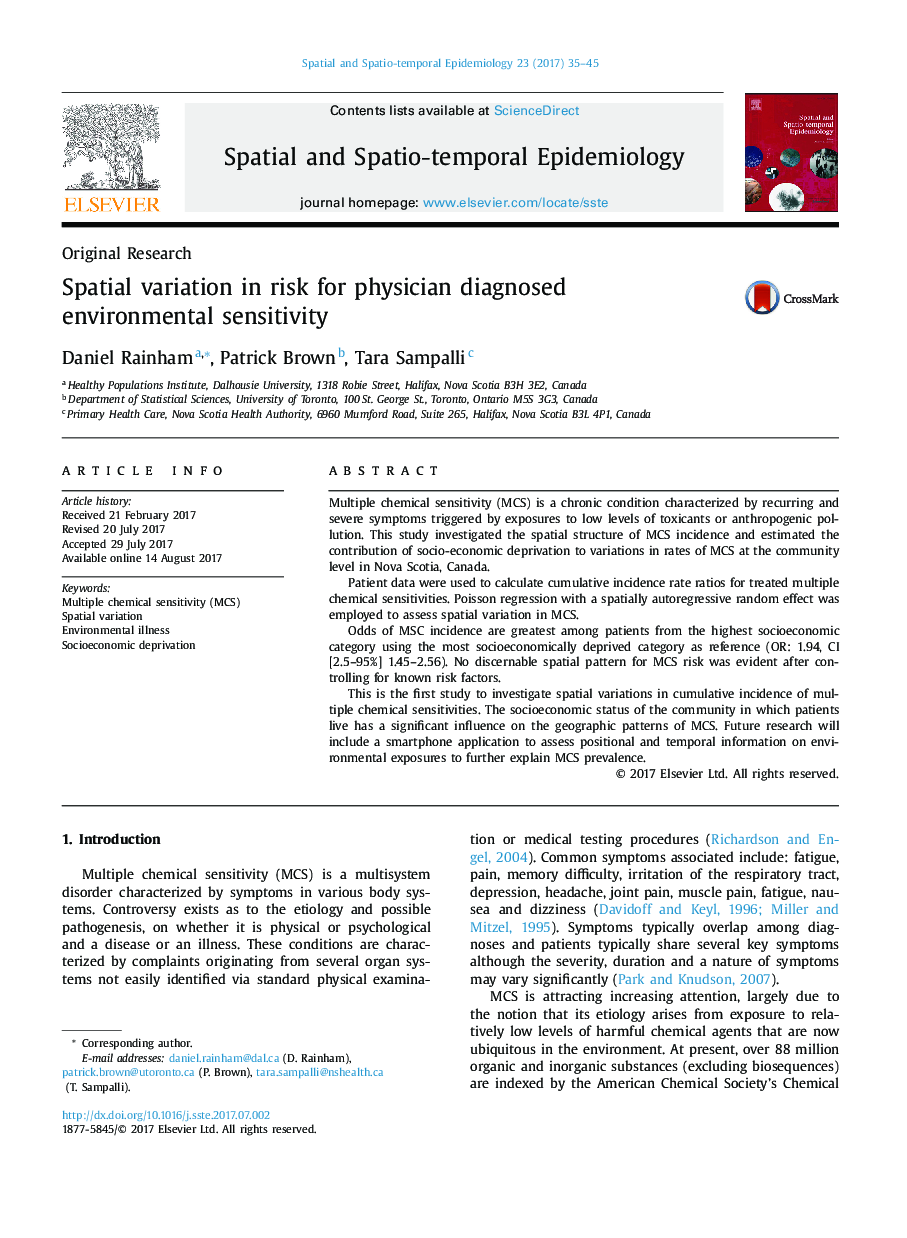| Article ID | Journal | Published Year | Pages | File Type |
|---|---|---|---|---|
| 5118916 | Spatial and Spatio-temporal Epidemiology | 2017 | 11 Pages |
Multiple chemical sensitivity (MCS) is a chronic condition characterized by recurring and severe symptoms triggered by exposures to low levels of toxicants or anthropogenic pollution. This study investigated the spatial structure of MCS incidence and estimated the contribution of socio-economic deprivation to variations in rates of MCS at the community level in Nova Scotia, Canada.Patient data were used to calculate cumulative incidence rate ratios for treated multiple chemical sensitivities. Poisson regression with a spatially autoregressive random effect was employed to assess spatial variation in MCS.Odds of MSC incidence are greatest among patients from the highest socioeconomic category using the most socioeconomically deprived category as reference (OR: 1.94, CI [2.5-95%] 1.45-2.56). No discernable spatial pattern for MCS risk was evident after controlling for known risk factors.This is the first study to investigate spatial variations in cumulative incidence of multiple chemical sensitivities. The socioeconomic status of the community in which patients live has a significant influence on the geographic patterns of MCS. Future research will include a smartphone application to assess positional and temporal information on environmental exposures to further explain MCS prevalence.
